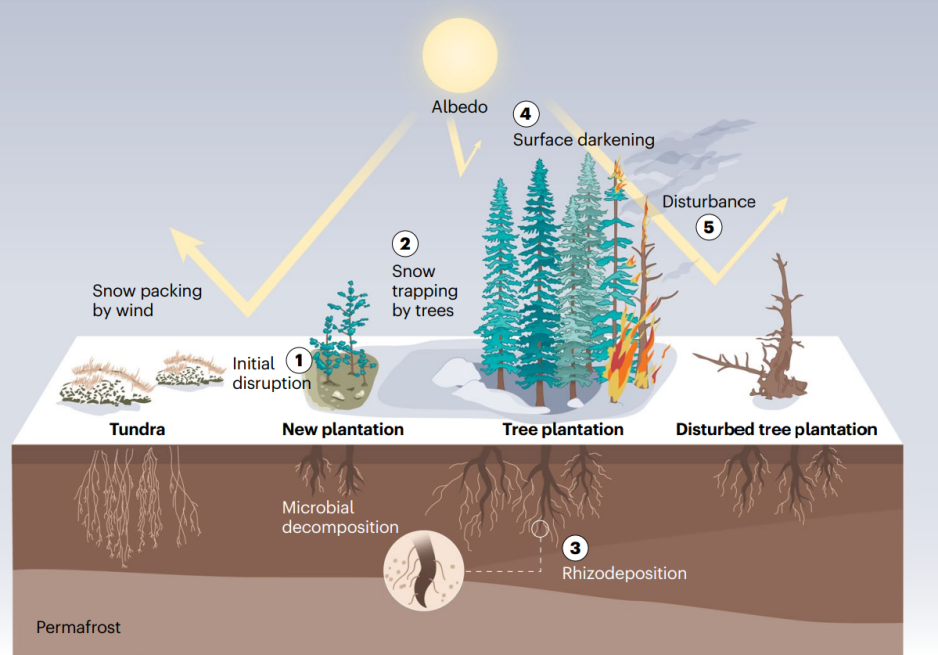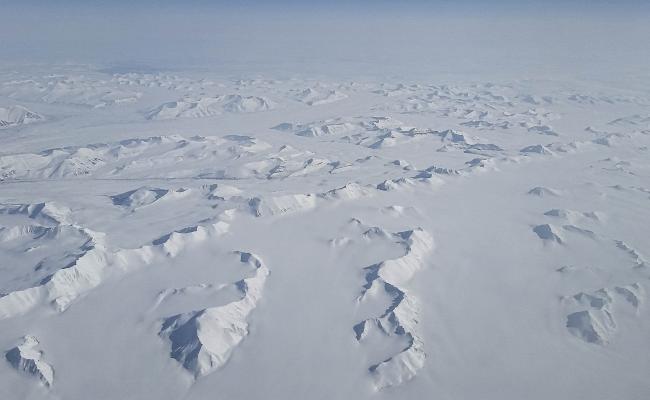Tree Planting Is No Climate Solution in the Arctic
Large open areas in the Arctic reflect light and contribute to cooling the region to a much greater extent than trees, scientists believe. (Photo: Aurélien Grange)
Planting trees is a simple and efficient way to mitigate climate change. However, new research shows that planting trees in the Arctic could have the opposite effect and, in fact, increase global warming.
Research published in the renowned journal Nature Geoscience now shows that tree-planting in the Arctic is not as efficient in fighting climate change as first presumed.
Under the title "Tree planting is no climate solution at northern high latitudes," 12 researchers argue that tree planting is no quick fix for climate change, particularly in the Arctic.
The main researcher behind the study, Jeppe Aagard Kristensen from Aarhus University, tells High North News that they are not trying to make an argument against tree-planting in general but ask for clarity about when it can contribute to solving the climate crisis and hence can be considered a nature-based climate solution.
"Nature-based climate solutions have to contribute to climate cooling while having a positive impact on local biodiversity and livelihoods. Tree-planting at high latitudes does not fulfill that," he says.
Carbon capture
Planting a tree is a simple and concrete action and is therefore often emphasized as one of the solutions to the climate crisis. For example, many companies use tree planting as part of their climate compensation.
Trees contribute to mitigating climate change mainly by capturing carbon. Research has shown that tree planting has the potential to capture 750 billion tonnes of CO2.
In addition, trees contribute to mitigating climate change in the following ways:
- By cooling the environment
- Wood is used in recyclable products and can replace other products
- Wooden materials can be produced with a low consumption of fossil energy
- Trees can provide better access to water in dry areas
- Trees improve air quality
- Trees reduce erosion
- Trees filtrate water and prevent pollution of water sources
Yet, for tree planting to be a fruitful tool in the fight against climate change, it must be done right.
If non-native species are planted, they could become invasive and damage the area's biodiversity. If monocultures are planted instead of mixed forests, they could create ecological dead zones. In addition, it is important to cooperate with local communities so the trees actually survive, according to the climate organization Earthly.
Research now shows that there are particularly many factors at play when trees are to be planted in the Arctic.
Counterproductive
Tree-planting has long been a measure reserved for warmer climates than the Arctic. However, climate change has now led to tree-planting projects being introduced in high latitudes.
The researchers believe such measures could be counterproductive and even strengthen climate change.
In northern boreal and Arctic regions, tree planting can increase warming due to a darkening of the surface, also called decreased albedo. When short-wave radiation (such as sunlight) hits a surface, some of it is absorbed and emitted as long-wave radiation (heat). The reflected portion does not contribute to warming the atmosphere as it is reflected as light rather than being emitted as heat, writes the researchers.
When trees are planted in high latitudes, the increased surface darkness will counteract potential carbon storage effects. The Arctic is especially sensitive to decreased albedo due to the snow and daylight seasonality.
Since climate change leads to less snow and more rain, the Arctic will become increasingly sensitive to decreased albedo.
Planting trees can also disturb already-stored carbon in the soil. The frozen soil of the Arctic stores major parts of the region's carbon, and the soil carbon is particularly vulnerable to disturbances. Thus, planting trees could release the carbon stored in the soil.
In addition, tree planting naturally increases the risk of wildfires in the region. Since wildfires release carbon stored in trees and strengthen the greenhouse effect, there is a high risk linked to planting in the Arctic.

The figure illustrates how trees in the Arctic can increase global warming. Planted trees increase surface darkness and make it reflect less light and disturb, among other things, the carbon stored in the soil. (Source: Nature Geoscience article Tree planting is no climate solution at northern high latitudes)
Many respond positively to tree planting as it is such a concrete and simple measure that 'anyone' could do. Are there any other active measures to be taken in the Arctic to mitigate climate change?
"That is the wonderful thing about tree-planting and why it has been so widely adopted. It is so incredibly tangible and easy to understand. In the paper, we suggest that managing more open landscapes, for instance, by sustaining populations of large grazing animals on the landscape, is a better solution in this particular part of the world," says Kristensen.
"Yet, I am aware this is not something anyone can do."
"It is important to note that we are not trying to make an argument against tree-planting in general, we just ask for clarity about when it can contribute to solving the climate crisis and hence can be considered a nature-based climate solution if done in a way that leverages the local biodiversity and the livelihood of local people," he adds.
"Yet, we cannot ignore biodiversity nor local peoples’ livelihoods either, even if it had a cooling effect."
The researcher says that when it comes to the common man's tree planting, it is more a matter of raising awareness about an issue than planting trees because they really matter for the climate.
"Climate mitigation requires measures on very different scales than private gardens and parks," he states.
The researchers behind the study say that maintaining populations of large grazing animals in the landscape is a better climate measure in Arctic regions than planting trees. (Photo: Aurélien Grange)
Not new
The researchers emphasize that the criticism of tree planting as a climate measure is not new. Yet, they still see political incentives favoring tree planting in high latitudes.
The researchers highlight an Icelandic strategy for 2018-2030, where the authorities promote afforestation as an important means of carbon storage. They also refer to Alaska, where a new law was passed last year to promote carbon storage, including afforestation measures.
"There are also projects in Greenland, although the government there has not taken an official stance on it as a national climate solution, as far as I am aware," says Kristensen.



